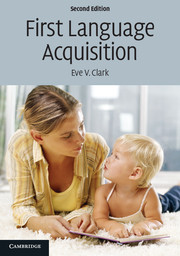Part III - Using language
Summary
[L]anguage acquisition is to a great extent the learning of how to make conversations.
Jean Berko Gleason 1977Language is a social art. In acquiring it we have to depend entirely on intersubjectively available cues as to what to say and when.
Willard v. O. Quine 1960Chapter 12: Honing conversational skills ▪ 281
Chapter 13: Doing things with language ▪ 306
Chapter 14: Two languages at a time ▪ 336
Speakers need to make use of different skills to participate fully in conversation. They need to acquire a range of skills, from telling stories to persuading someone of their point of view; from giving instructions to telling jokes; from adjusting one's speech to the level of the interlocutor to translating from one language to another. The focus in these chapters is on children's emerging skills in conversation, as they learn how to talk to different people about different things and how to adjust their speech to accommodate to their addressees as they accumulate common ground in each exchange. Children learn how to present topics and choose goals in conversation. And when they learn two languages at once, they are faced with additional choices – which language to use when.
- Type
- Chapter
- Information
- First Language Acquisition , pp. 279 - 280Publisher: Cambridge University PressPrint publication year: 2009
- 2
- Cited by



